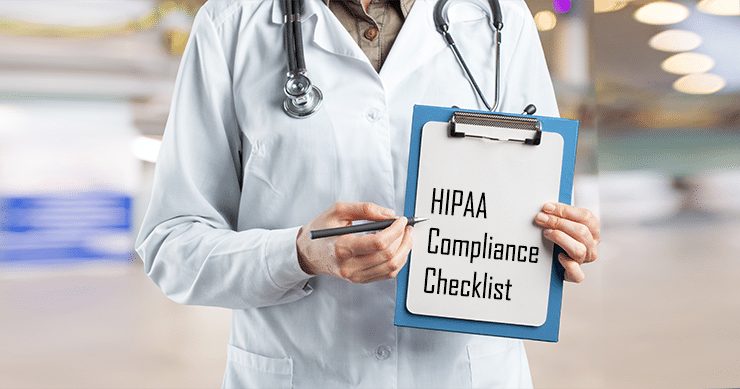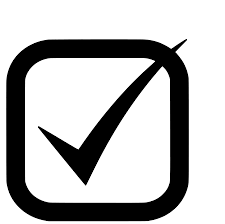
2023-11-9 14:58:32 Author: securityboulevard.com(查看原文) 阅读量:7 收藏
To assist healthcare organizations, both large and small, in achieving and maintaining HIPAA compliance, the U.S. Department of Health and Human Services (HHS) Office for Civil Rights has outlined essential elements of an effective HIPAA compliance program.

HIPAA Compliance Requirements Checklist
 Six HIPAA Annual Assessments
Six HIPAA Annual Assessments
The HHS Office for Civil Rights has identified six required annual audits and assessments to evaluate HIPAA compliance effectively. Let’s explore each of them in detail:
- Security Risk Assessment
A Security Risk Assessment (SRA) is critical to HIPAA compliance. It involves identifying and assessing potential security risks to protected health information (PHI) and evaluating the effectiveness of security measures. Key aspects to consider during an SRA include:
- Identifying vulnerabilities in your electronic PHI systems.
- Assessing physical security measures for PHI, such as access controls.
- Evaluating administrative safeguards, like workforce training and policies.
- Privacy Standards Audit (Not required for Business Associates)
This audit focuses on assessing compliance with HIPAA Privacy Standards, which govern the use and disclosure of PHI. Privacy standards audits include:
- Evaluating privacy policies and procedures.
- Ensuring individuals’ rights to access their PHI are upheld.
- Verifying proper authorizations for PHI disclosures.
- HITECH Subtitle D Privacy Audit
The Health Information Technology for Economic and Clinical Health (HITECH) Act extends HIPAA requirements, especially regarding electronic health records (EHRs). This audit examines:
- Compliance with HITECH provisions.
- Security of electronic PHI.
- Timely notification of breaches.
- Security Standards Audit
Similar to the Privacy Standards Audit, the Security Standards Audit focuses on compliance with HIPAA Security Standards. This includes:
- Assessing safeguards for electronic PHI.
- Ensuring the confidentiality, integrity, and availability of PHI.
- Monitoring and auditing of information systems.
- Asset and Device Audit
This audit addresses the protection of hardware and software that contains PHI. It involves:
- Inventorying all devices and equipment that store or transmit PHI.
- Implementing physical and technical safeguards for these assets.
- Ensuring secure disposal of devices when no longer needed.
- Physical Site Audit
The Physical Site Audit concentrates on physical security measures at healthcare facilities, including:
- Access controls to the facility and areas containing PHI.
- Surveillance systems.
- Emergency response plans.
- Visitor logs and badges.
 Documenting Gaps and Remediation
Documenting Gaps and Remediation
A vital aspect of HIPAA compliance is identifying and addressing deficiencies uncovered during the above audits. Here’s what you need to do:
- Documenting Gaps: Record all identified deficiencies in detail. This documentation is crucial for compliance.
- Creating Remediation Plans: Develop remediation plans to rectify the deficiencies. Ensure these plans are comprehensive and actionable.
- Documenting Remediation Plans: Put your remediation plans in writing, outlining steps, responsible parties, and timelines for correction.
- Annual Review of Remediation Plans: Regularly update and review remediation plans to ensure continuous improvement.
 Staff Training and Policies
Staff Training and Policies
1. Staff Training
HIPAA requires that all staff members undergo annual HIPAA training. Key considerations include:
- Tracking and verifying completion of training.
- Providing refresher training as necessary.
- Ensuring that staff understands the importance of HIPAA compliance.
2. HIPAA Compliance Officer
Designate a staff member as the HIPAA Compliance, Privacy, and/or Security Officer. Their responsibilities include overseeing compliance efforts, handling complaints, and serving as a point of contact for inquiries.
3. Policies and Procedures
Develop and maintain policies and procedures relevant to the annual HIPAA Privacy, Security, and Breach Notification Rules. Ensure that these documents are:
- Updated as needed to reflect changes in regulations.
- Reviewed annually for accuracy and compliance.
- Legally attested to by staff members.
 Vendor and Business Associate Management
Vendor and Business Associate Management
1. Identifying Vendors and Business Associates
Identify all vendors and business associates who have access to PHI or provide services involving PHI.
2. Business Associate Agreements
Ensure that Business Associate Agreements (BAAs) are in place with all relevant entities. BAAs outline responsibilities, requirements, and safeguards for PHI.
3. Confidentiality Agreements
Consider using Confidentiality Agreements with non-Business Associate vendors who may encounter PHI.
 Incident and Breach Management
Incident and Breach Management
- Establish a defined process for handling incidents or breaches involving PHI.
- Develop the ability to track and manage investigations of all incidents.
- Ensure the ability to provide required reporting of minor or meaningful breaches or incidents.
- Implement a mechanism for staff members to report incidents anonymously.
 Compliance Documentation and Recordkeeping
Compliance Documentation and Recordkeeping
Keep comprehensive records of all compliance activities, assessments, training, policies, procedures, and agreements. Maintain these records for at least six years to comply with potential audit requirements.
Understanding HIPAA’s 3 Basic Rules
The Health Insurance Portability and Accountability Act (HIPAA) comprises various rules and regulations to safeguard the healthcare industry’s confidentiality, integrity, and availability of protected health information (PHI). HIPAA’s primary rules include the Privacy Rule, Security Rule, and Breach Notification Rule.
Privacy Rule
Purpose:
The Privacy Rule, also known as the Standards for Privacy of Individually Identifiable Health Information, establishes standards to protect the privacy of patients’ medical records and other health information. It sets limits and conditions on using and disclosing PHI without patient authorization.
Key Provisions:
- Privacy Standards Audit (Not required for Business Associates): This relates to compliance with the Privacy Rule. The Privacy Rule stipulates that organizations must have policies and procedures in place to safeguard PHI and respect patients’ rights to access and control their medical information.
- Policies and Procedures: The Privacy Rule requires healthcare entities to develop, maintain, and periodically review policies and procedures governing PHI use and disclosure. Documentation and legal attestation are essential components.
- Staff Training: To adhere to the Privacy Rule, all staff members handling PHI must undergo annual HIPAA training. Training records must be maintained.
- Confidentiality Agreements: While not directly stated in the Privacy Rule, confidentiality agreements with non-Business Associate vendors can further protect PHI when necessary.
Security Rule
Purpose:
The Security Rule, officially the Security Standards for the Protection of Electronic Protected Health Information (ePHI), focuses on the technical and physical safeguards necessary to secure electronic PHI. It aims to ensure the confidentiality, integrity, and availability of ePHI.
Key Provisions:
- Security Risk Assessment: HIPAA mandates a Security Risk Assessment (SRA) to identify vulnerabilities and assess security risks associated with ePHI. This is essential for compliance with the Security Rule.
- Security Standards Audit: This relates to compliance with the Security Rule and entails the assessment of safeguards, encryption, access controls, and monitoring of information systems.
- Asset and Device Audit: This audit addresses the protection of hardware and software containing ePHI, aligning with the Security Rule’s physical safeguard requirements.
- Physical Site Audit: Ensuring physical security measures at healthcare facilities is crucial for compliance with the Security Rule.
Breach Notification Requirements
Purpose:
The Breach Notification Rule sets forth requirements for notifying individuals, the HHS Office for Civil Rights, and, in certain cases, the media, in the event of a breach of unsecured PHI. Its aim is to enhance transparency and accountability following a breach.
Key Provisions:
- Incident and Breach Management: A defined process for incidents and breaches involving PHI is necessary to meet the requirements of the Breach Notification Rule. This includes the ability to track, manage, and report breaches promptly.
- Reporting Minor or Meaningful Breaches: Compliance with the Breach Notification Rule involves providing required reporting of both minor and meaningful breaches or incidents involving unsecured PHI.
- Anonymous Reporting: HIPAA compliance should include mechanisms for staff members to anonymously report incidents, as this aligns with the requirements for breach management.
Follow the HIPAA Compliance Security Checklist To Meet HIPAA Requirements
HIPAA compliance is an ongoing commitment to safeguarding patient information. By conducting the annual audits and assessments outlined above in the HIPAA compliance audit checklist, documenting deficiencies and remediation plans, and ensuring staff training and compliance with policies, healthcare organizations can demonstrate their commitment to HIPAA compliance. Proper management of vendors and business associates and effective incident and breach management are also crucial elements in protecting PHI. By following this comprehensive HIPAA checklist, healthcare entities can navigate the complex regulatory landscape and ensure the security and privacy of patient information. Remember, HIPAA compliance is not just a legal requirement; it’s a fundamental aspect of providing quality healthcare services while preserving patient trust.
If you are unfamiliar with these rules and standards, you are strongly advised to seek professional compliance advice.
We recommend you speak with a team member to learn how Centraleyes helps simplify, automate, and fulfill all of your HIPAA software compliance checklist requirements.
The post HIPAA Compliance Checklist for Enhanced Data Security appeared first on Centraleyes.
*** This is a Security Bloggers Network syndicated blog from Centraleyes authored by Michelle Ofir Geveye. Read the original post at: https://www.centraleyes.com/hipaa-compliance-checklist/
如有侵权请联系:admin#unsafe.sh
